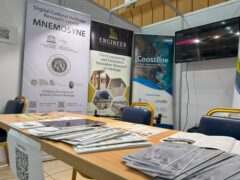From point cloud to FE model discussion
The transformation of Tomb 7’s high-resolution 3D point cloud data into a Finite Element (FE) model was a complex process that required meticulous attention to detail. Initially, the 3D point cloud data, which captures the precise geometrical details of the tomb, underwent extensive processing to ensure accuracy and completeness. This involved filtering out noise, aligning various scans, and optimizing the mesh to create a coherent and high-quality digital representation of the tomb’s structure.
Once the point cloud data was refined, it was converted into a Finite Element model. This step involved generating a mesh that accurately reflects the physical properties and geometrical intricacies of Tomb 7. The mesh optimization process was crucial for ensuring that the FE model could be used for detailed structural analysis without losing any critical details of the tomb’s architecture.
The resulting FE model provided a powerful tool for structural analysis, enabling researchers to simulate various stress scenarios and identify potential weaknesses in the tomb’s structure. This detailed analysis is essential for planning effective conservation strategies, as it allows for the identification of areas that may require reinforcement or other preservation measures.
This case study underscores the effectiveness of integrating modern digital techniques, such as high-resolution 3D scanning and finite element modeling, into the field of heritage preservation. By leveraging these advanced technologies, researchers and conservators can gain a deeper understanding of historical structures, leading to more informed and precise conservation efforts.





